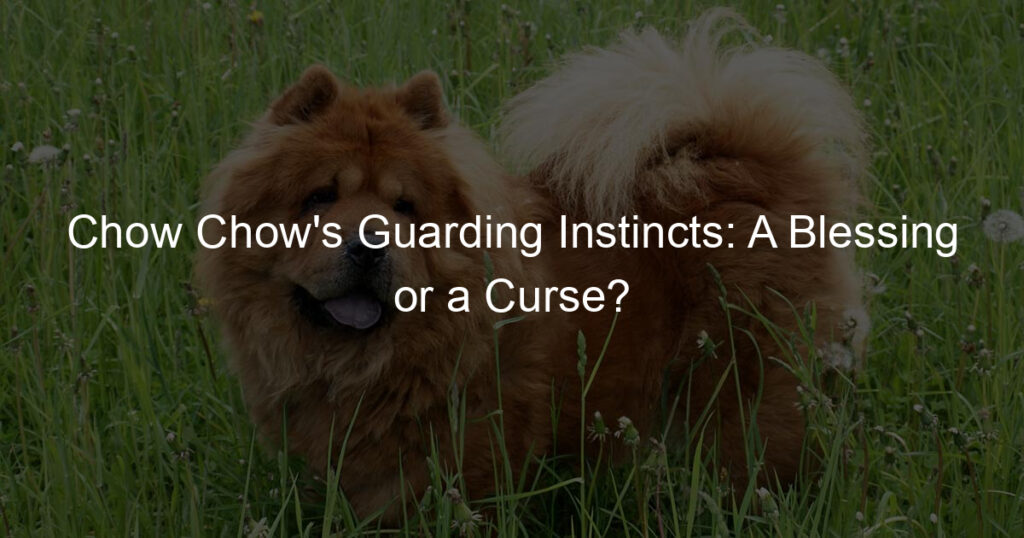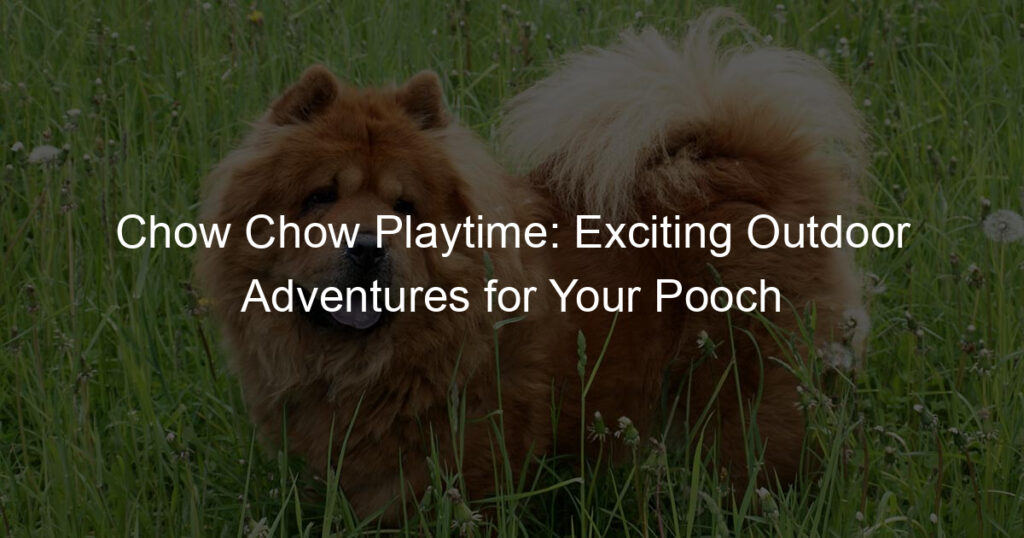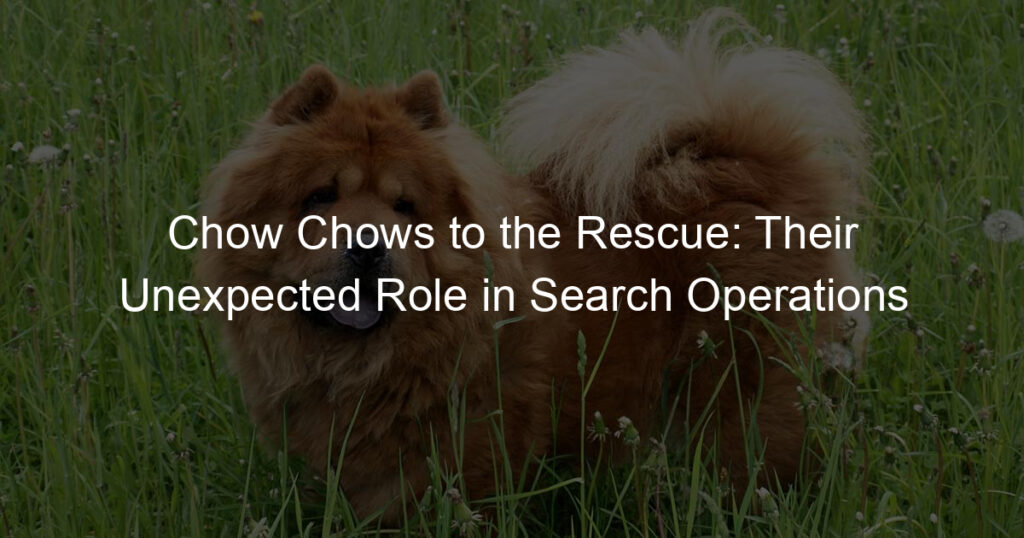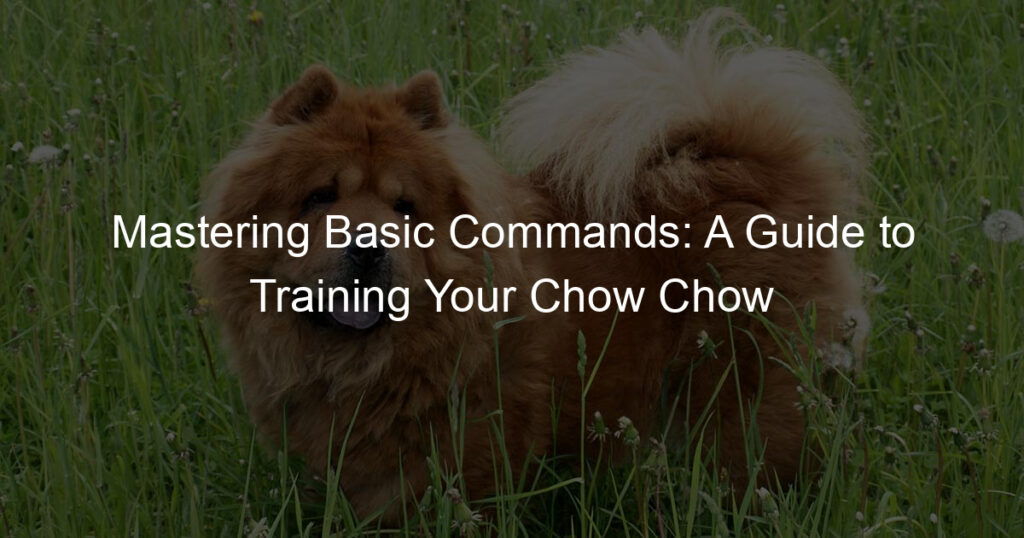Introduction to Chow Chow Breed Characteristics
Chow Chows are an ancient breed with many unique characteristics that make them stand out. In this section, we will delve into the origin and history of the breed, their physical characteristics, and their general temperament.
- Origin and history of the Chow Chow breed
- Physical characteristics of Chow Chows
- General temperament of Chow Chows
The Chow Chow is one of the oldest dog breeds in the world, originating from northern China. The breed’s history dates back over 2000 years, and they were used for various tasks such as hunting, herding, and guarding. The Chow Chow was highly valued for its strength and loyalty. The breed was introduced to the West in the late 19th century and has since become a popular pet worldwide. For more detailed information, you can visit the Chow Chow Wikipedia page.
Chow Chows are medium-sized dogs, typically weighing between 45 and 70 pounds. They are known for their distinctive physical features such as a lion-like mane, deep-set eyes, and a blue-black tongue. Their thick double coat can be of various colors, including red, black, blue, cinnamon, and cream. They have a sturdy and square profile with broad skulls and small, triangular, erect ears.
Chow Chows are known for their dignified and aloof demeanor. They are often described as cat-like in their independence and can be reserved, especially with strangers. However, they are also very loyal and protective of their families. They are typically quiet and well-behaved, but they can be stubborn at times. Early socialization and consistent training are essential for this breed.
In the following sections, we will explore the Chow Chow’s guarding instincts and provide tips for training this unique breed. Stay tuned to learn more about these fascinating dogs.
Understanding Chow Chow Guarding Instincts
Chow Chows are known for their strong guarding instincts. This breed, originally from northern China, was bred for various tasks including hunting, herding, and protecting. As a result, they have a natural inclination to protect their home and family. However, understanding this guarding instinct is crucial for any Chow Chow owner to ensure a healthy and balanced relationship with their pet.
Protective Behavior in Chow Chows
Chow Chows are naturally protective, and this behavior is often seen in their interactions with strangers and in new environments. Let’s delve into some examples of this behavior and understand what triggers it.
- Examples of protective behavior in Chow Chows
- Understanding the triggers for protective behavior
Chow Chows are known to be aloof and reserved, especially with strangers. They may bark or growl when someone unfamiliar approaches their territory. This breed is also known to be protective of their family members and can become aggressive if they perceive a threat.
Several factors can trigger a Chow Chow’s protective behavior. These include unfamiliar people, new environments, and perceived threats to their family. It’s important to note that each Chow Chow is unique, and what triggers one may not trigger another. Understanding your Chow Chow’s specific triggers can help you manage their protective behavior effectively.
Understanding and managing a Chow Chow’s guarding instincts is crucial for a harmonious home environment. With patience, understanding, and proper training, you can help your Chow Chow channel their protective instincts in a positive way.
Problematic Behavior in Chow Chows
While Chow Chows are known for their loyalty and protective nature, they can sometimes exhibit problematic behavior. This section will help you identify these signs and provide a case study on dealing with aggressive behavior in Chow Chows.
- Identifying Signs of Problematic Behavior
- Aggression: If your Chow Chow is growling, snapping, or biting, it may be a sign of aggression.
- Excessive Barking: While some barking is normal, excessive barking can be a sign of stress or anxiety.
- Destructive Behavior: This could include chewing on furniture or other inappropriate items, or excessive digging.
- Case Study: Dealing with Aggressive Behavior in Chow Chows
Understanding your Chow Chow’s behavior is crucial for maintaining a healthy and happy relationship with your pet. Problematic behavior can manifest in various ways, such as excessive barking, aggression, or destructive behavior. Here are some signs to watch out for:
Remember, these behaviors can also be signs of underlying health issues, so it’s important to consult with a veterinarian if you notice any drastic changes in your Chow Chow’s behavior.
Aggression in Chow Chows can be a serious issue. Let’s look at a case study of a Chow Chow named Max.
Max was a 3-year-old Chow Chow who started showing signs of aggression towards strangers. His owners decided to consult with a professional dog trainer. The trainer suggested a combination of obedience training and socialization exercises. After several weeks of consistent training and positive reinforcement, Max’s aggressive behavior significantly reduced.
This case study shows that with patience, consistency, and professional guidance, aggressive behavior in Chow Chows can be managed effectively.
In conclusion, understanding and addressing problematic behavior in Chow Chows is crucial for their well-being and the safety of those around them. Remember, every Chow Chow is unique and may require different approaches to manage their behavior. Always consult with a professional if you’re unsure or if the behavior continues despite your efforts.
Training Chow Chows
Training your Chow Chow can be a rewarding experience when done correctly. One of the most critical aspects to focus on is managing their aggression. Let’s delve into this topic.
Managing Chow Chow Aggression
Chow Chows are known for their strong guarding instincts, which can sometimes lead to aggressive behavior. However, understanding the root cause, implementing effective strategies, and knowing key takeaways can help manage this aggression.
- Understanding the Root Cause of Aggression
- Strategies for Managing Aggression
- Key Takeaways for Dealing with Chow Chow Aggression
Aggression in Chow Chows is often a result of their protective instincts. This breed was originally used for guarding, and this trait is still prevalent today. Fear, anxiety, or a lack of socialization can also trigger aggression. Understanding these triggers is the first step in managing their behavior. Learn more about Chow Chow temperament here.
Once you understand the root cause, you can implement strategies to manage your Chow Chow’s aggression. These include early socialization, consistent training, and positive reinforcement. It’s also essential to provide them with plenty of physical and mental stimulation to prevent boredom, which can lead to aggressive behavior.
Remember, patience and consistency are key when dealing with Chow Chow aggression. Never punish your dog for aggressive behavior as it can make the situation worse. Instead, reward good behavior and work with a professional trainer if needed. Understanding and managing your Chow Chow’s aggression will lead to a happier and healthier relationship with your furry friend.
In conclusion, managing Chow Chow aggression is all about understanding the root cause, implementing effective strategies, and being consistent in your approach. With patience and understanding, you can help your Chow Chow become a well-behaved and loving companion.
Socializing Chow Chows
Chow Chows, known for their unique appearance and strong guarding instincts, require proper socialization to ensure they grow into well-rounded and friendly dogs. This section will delve into the importance of early socialization and effective techniques for socializing your Chow Chow.
- Importance of Early Socialization
Early socialization is crucial for Chow Chows. It helps them become comfortable with different environments, people, and other animals. This process, ideally started between the ages of 3 to 12 weeks, can significantly influence your Chow Chow’s behavior and temperament. According to a Wikipedia article, puppies that are well-socialized are less likely to develop fear or aggression towards unfamiliar situations.
- Effective Techniques for Socializing Chow Chows
There are several effective techniques for socializing your Chow Chow. Here are a few:
- Exposure: Regularly expose your Chow Chow to different environments, people, and animals. This can be achieved through walks in the park, visits to pet-friendly establishments, or playdates with other dogs.
- Puppy Classes: Enrolling your Chow Chow in puppy classes can be a great way to socialize them. These classes provide a controlled environment where your Chow Chow can interact with other dogs and people under the guidance of a professional trainer.
- Positive Reinforcement: Reward your Chow Chow for positive behavior during socialization. This could be in the form of treats, praise, or toys. This encourages them to associate socialization with positive experiences.
Remember, patience and consistency are key when socializing your Chow Chow. It’s a gradual process that requires time and effort. But the end result – a friendly and well-adjusted Chow Chow – is definitely worth it.
Conclusion: Chow Chow’s Guarding Instincts – A Blessing or a Curse?
As we reach the end of our exploration into the unique world of the Chow Chow breed, we find ourselves faced with a question. Are the guarding instincts of these majestic creatures a blessing or a curse? Let’s take a moment to recap what we’ve learned and share some final thoughts on managing and understanding Chow Chow behavior.
- Recap of Chow Chow breed characteristics and guarding instincts
- Final thoughts on managing and understanding Chow Chow behavior
The Chow Chow is a breed known for its lion-like appearance and blue-black tongue. These dogs are naturally aloof and reserved, particularly with strangers. Their guarding instincts are a fundamental part of their breed characteristics, inherited from their ancestors who served as guard dogs in ancient China. This instinct can make them protective and territorial, but also loyal and devoted to their families. For more information, you can visit the Wikipedia page on Chow Chows.
Understanding and managing Chow Chow behavior requires patience, consistency, and respect for their natural instincts. Training should focus on socialization and obedience, and it’s crucial to establish yourself as the leader of the pack. Remember, every Chow Chow is an individual, and while they may share common breed traits, their personalities can vary widely. With the right approach, the Chow Chow’s guarding instincts can be a blessing, providing a loyal and protective companion for your family.
In conclusion, the Chow Chow’s guarding instincts can be seen as both a blessing and a curse. It all depends on the perspective and the effort put into understanding and managing these instincts. With the right approach, these dogs can be wonderful companions, providing security and loyalty to their families. It’s all about understanding and respecting the breed’s unique characteristics and needs.














